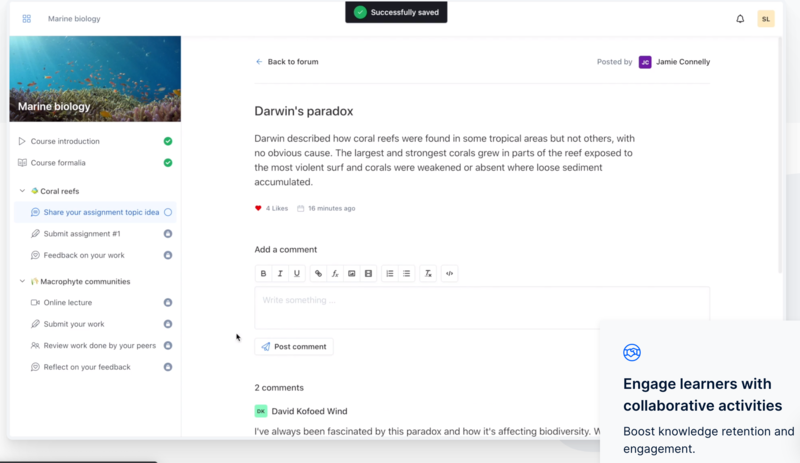e-Learning Ecologies MOOC’s Updates
Common Approaches in Software for Differentiated Learning
The goal of differentiated learning is to allow a student to work and learn at their own pace and support their learning transformation. Dr. Mary Kalantzis mentions this shift to prioritizing personalized learning needs over the convenience of traditional teaching methods requires an abandonment of enforcing rigid systems that aim to provide “sameness” in the educational experience. With technology, we no longer have to use a one-size fits-all-and-hope-for-the-best approach. Software affords us the ability to consider the vast range of needs, interests, and motivations learners have and leverage data about their learning progress.
Common approaches in software applications that aim to support differentiated learning include:
- Gamification: where a learner can work through a series of quizzes at an individual pace and are incentivized by points, short mini-game play times, and/or peer-to-peer competition
- Specialized annotation of reading materials: where learners can annotate learning materials with questions for clarification and instructors can provide highlights to engage different interests
- Course authoring: where an instructor can create a course and assessments
Kahoot! is a very popular web app that allows a host to create a quiz and for others to conveniently participate in a game of competitively answering. For individual learning, Kahoot is best suited for memory work where they can perform as many repetitions of a quiz (in a non-competitive environment). Because assessments are created with non-open ended questions, it does not do anything for assisting with metacognition.
Actively Learn is a product that provides articles, assignments, and courses curated by product developers. What’s nice about this product is that it exposes features for learners to give feedback to teachers by way of highlighting course material that they may have questions or comments about. Teachers also can provide supplemental links to media assisting students with contextual knowledge. These annotation and feedback features are important to differentiated learning because it allows the teacher to understand quickly how best to cater resources to individuals. However, the main drawback to this application is that instructors have limited authoring capabilities on the educational material and assessments outside of the highlighting capabilities so localized learning is not really an option.
EduFlow is a course authoring application that seems to almost be the solution for allowing an instructor to author courses, track personal student progress, and provide feedback opportunities. While the highlight/feedback features are less robust than Actively Learn, there is still the capability to provide feedback so that teachers can understand quickly what a student’s individual needs are. It also exposes tracking of student engagement with peers, encouraging collaborative development.
While all of these applications do share the common goal of supporting differentiated learning, it is very clear that no singular application currently supports all the different ways differentiated learning is carried out. Differentiated learning is likely to look different in different subject areas so it makes sense that a combination of these tools would be required for thorough differentiated learning.




